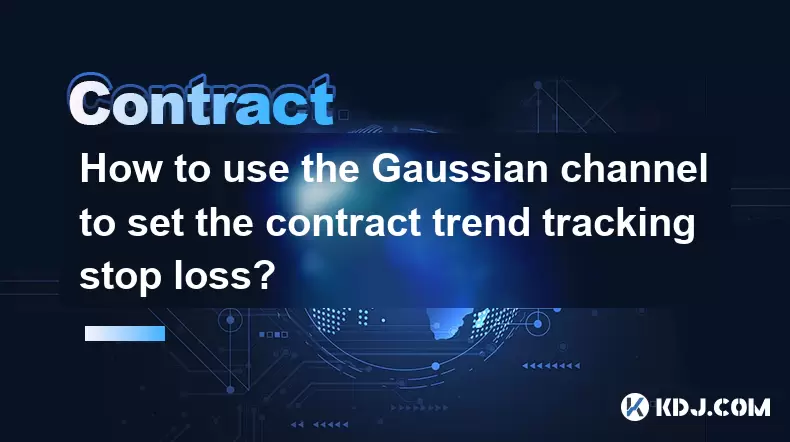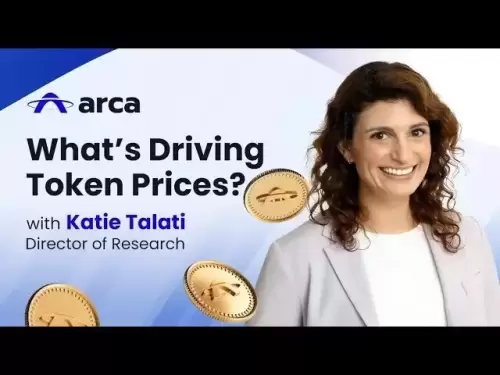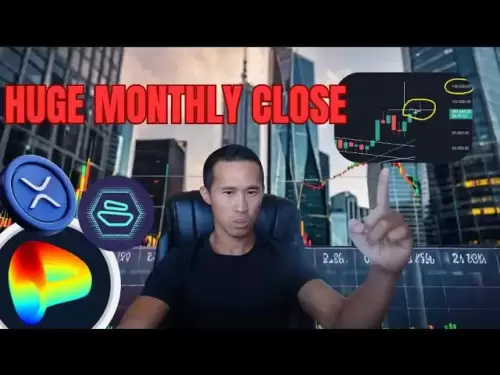-
 Bitcoin
Bitcoin $107,443.3008
-1.17% -
 Ethereum
Ethereum $2,494.2503
-0.63% -
 Tether USDt
Tether USDt $1.0003
0.00% -
 XRP
XRP $2.2496
2.23% -
 BNB
BNB $658.7569
0.63% -
 Solana
Solana $154.9826
1.94% -
 USDC
USDC $1.0000
0.01% -
 TRON
TRON $0.2799
1.07% -
 Dogecoin
Dogecoin $0.1659
-1.78% -
 Cardano
Cardano $0.5745
0.25% -
 Hyperliquid
Hyperliquid $39.7005
0.13% -
 Bitcoin Cash
Bitcoin Cash $519.5989
3.78% -
 Sui
Sui $2.7874
-2.40% -
 Chainlink
Chainlink $13.3762
-1.69% -
 UNUS SED LEO
UNUS SED LEO $9.0784
-0.64% -
 Avalanche
Avalanche $17.9846
-2.81% -
 Stellar
Stellar $0.2390
-0.06% -
 Toncoin
Toncoin $2.9028
0.25% -
 Shiba Inu
Shiba Inu $0.0...01147
-2.17% -
 Litecoin
Litecoin $86.6956
-1.27% -
 Hedera
Hedera $0.1508
-0.50% -
 Monero
Monero $322.6222
3.26% -
 Polkadot
Polkadot $3.4124
-2.99% -
 Dai
Dai $0.9999
0.00% -
 Bitget Token
Bitget Token $4.5434
-1.97% -
 Ethena USDe
Ethena USDe $1.0002
0.00% -
 Uniswap
Uniswap $7.1562
-2.61% -
 Aave
Aave $275.8830
-1.02% -
 Pepe
Pepe $0.0...09790
-4.04% -
 Pi
Pi $0.5018
-5.09%
Coinbase perpetual contract tutorial example
To begin trading perpetual contracts on Coinbase, open an account, deposit funds, select a trading pair, place either market or limit orders, monitor your position, close it when desired, and finally withdraw your funds.
Nov 21, 2024 at 04:01 am

Coinbase Perpetual Contract Tutorial Example
Coinbase is one of the most popular cryptocurrency exchanges in the world, and it recently launched a perpetual contract trading platform. Perpetual contracts are a type of futures contract that allow traders to speculate on the price of an underlying asset without having to take physical delivery of the asset.
This tutorial will provide you with a step-by-step guide on how to trade perpetual contracts on Coinbase.
Step 1: Open a Coinbase Account
If you don't already have a Coinbase account, you can open one by visiting the Coinbase website. Once you have created an account, you will need to verify your identity by providing your government-issued ID and proof of address.
Step 2: Deposit Funds
Once your account has been verified, you can deposit funds into your account. Coinbase supports a variety of deposit methods, including bank transfers, credit cards, and debit cards.
Step 3: Find the Perpetual Contract Market
Once you have deposited funds into your account, you can find the perpetual contract market by clicking on the "Derivatives" tab at the top of the Coinbase website.
Step 4: Choose a Trading Pair
The next step is to choose a trading pair. A trading pair is a pair of assets that you are trading against each other. For example, you could trade the BTC/USD trading pair, which would allow you to speculate on the price of Bitcoin against the US dollar.
Step 5: Place an Order
Once you have chosen a trading pair, you can place an order. There are two types of orders that you can place: market orders and limit orders. Market orders are executed immediately at the current market price, while limit orders are executed only when the price reaches a specified level.
Step 6: Monitor Your Position
Once you have placed an order, you can monitor your position by clicking on the "Orders" tab at the top of the Coinbase website.
Step 7: Close Your Position
When you are ready to close your position, you can click on the "Close" button next to your order.
Step 8: Withdraw Your Funds
Once you have closed your position, you can withdraw your funds from your Coinbase account by clicking on the "Withdraw" tab at the top of the website.
Tips for Trading Perpetual Contracts
Here are a few tips for trading perpetual contracts:
- Use a stop-loss order. A stop-loss order is an order that is designed to close your position automatically if the price of the underlying asset reaches a specified level. This can help you to limit your losses if the market moves against you.
- Don't trade with more money than you can afford to lose. Perpetual contracts are a leveraged product, which means that you can lose more money than you deposit into your account. Only trade with money that you can afford to lose.
- Do your own research. Before you start trading perpetual contracts, it is important to do your own research and understand the risks involved.
Disclaimer:info@kdj.com
The information provided is not trading advice. kdj.com does not assume any responsibility for any investments made based on the information provided in this article. Cryptocurrencies are highly volatile and it is highly recommended that you invest with caution after thorough research!
If you believe that the content used on this website infringes your copyright, please contact us immediately (info@kdj.com) and we will delete it promptly.
- Circle, Stablecoins, and National Banks: A New Era for Digital Finance?
- 2025-07-01 09:10:12
- Stablecoin Showdown: USD1 vs. USDC and the Regulatory Rumble
- 2025-07-01 09:10:12
- Qubetics, Crypto Investment, Hedera & Avalanche: Navigating the July 2025 Crypto Landscape
- 2025-07-01 08:50:12
- Kazakhstan's Crypto Reserve: Balancing Financial Stability and Digital Innovation
- 2025-07-01 09:15:11
- Ruvi AI: The 13,800% Bull Run Return That Could Outshine Tron
- 2025-07-01 09:20:12
- Ethereum, Cardano, SUI & OP: Navigating the Shifting Crypto Landscape
- 2025-07-01 08:50:12
Related knowledge

How to use the price slope to filter the false breakthrough signal of the contract?
Jun 20,2025 at 06:56pm
Understanding the Concept of Price Slope in Contract TradingIn contract trading, especially within cryptocurrency derivatives markets, price slope refers to the rate at which the price changes over a specific time period. It helps traders assess the strength and sustainability of a trend. A steep slope may indicate strong momentum, while a shallow slope...

How to determine the expected volatility of the contract through the volatility cone?
Jun 19,2025 at 12:28pm
Understanding the Basics of Volatility in Cryptocurrency ContractsIn the realm of cryptocurrency trading, volatility is a key metric that traders use to assess potential risk and reward. When dealing with futures contracts, understanding how volatile an asset might become over time is crucial for position sizing, risk management, and strategy developmen...

How to formulate a contract intraday trading plan in combination with the pivot point system?
Jun 21,2025 at 03:42pm
Understanding the Basics of Pivot Points in Cryptocurrency TradingPivot points are technical analysis tools used by traders to identify potential support and resistance levels. These levels are calculated using the previous day's high, low, and closing prices. In the context of cryptocurrency trading, where markets operate 24/7, pivot points help trader...

How to adjust the contract position ratio through the price fluctuation entropy?
Jun 22,2025 at 11:42am
Understanding Price Fluctuation Entropy in Cryptocurrency ContractsIn the world of cryptocurrency futures trading, price fluctuation entropy is a relatively new concept used to measure market volatility and uncertainty. It derives from information theory, where entropy refers to the degree of randomness or unpredictability in a system. In crypto contrac...

How to use the volume swing indicator to predict the contract volume-price divergence?
Jun 18,2025 at 11:42pm
Understanding the Volume Swing IndicatorThe volume swing indicator is a technical analysis tool used primarily in cryptocurrency trading to evaluate changes in volume over time. Unlike price-based indicators, this metric focuses solely on trading volume, which can provide early signals about potential market reversals or continuations. The key idea behi...

How to use the Gaussian channel to set the contract trend tracking stop loss?
Jun 18,2025 at 09:21pm
Understanding the Gaussian Channel in Cryptocurrency TradingThe Gaussian channel is a technical indicator used primarily in financial markets, including cryptocurrency trading, to identify trends and potential reversal points. It is based on statistical principles derived from the normal distribution, commonly known as the Gaussian distribution or bell ...

How to use the price slope to filter the false breakthrough signal of the contract?
Jun 20,2025 at 06:56pm
Understanding the Concept of Price Slope in Contract TradingIn contract trading, especially within cryptocurrency derivatives markets, price slope refers to the rate at which the price changes over a specific time period. It helps traders assess the strength and sustainability of a trend. A steep slope may indicate strong momentum, while a shallow slope...

How to determine the expected volatility of the contract through the volatility cone?
Jun 19,2025 at 12:28pm
Understanding the Basics of Volatility in Cryptocurrency ContractsIn the realm of cryptocurrency trading, volatility is a key metric that traders use to assess potential risk and reward. When dealing with futures contracts, understanding how volatile an asset might become over time is crucial for position sizing, risk management, and strategy developmen...

How to formulate a contract intraday trading plan in combination with the pivot point system?
Jun 21,2025 at 03:42pm
Understanding the Basics of Pivot Points in Cryptocurrency TradingPivot points are technical analysis tools used by traders to identify potential support and resistance levels. These levels are calculated using the previous day's high, low, and closing prices. In the context of cryptocurrency trading, where markets operate 24/7, pivot points help trader...

How to adjust the contract position ratio through the price fluctuation entropy?
Jun 22,2025 at 11:42am
Understanding Price Fluctuation Entropy in Cryptocurrency ContractsIn the world of cryptocurrency futures trading, price fluctuation entropy is a relatively new concept used to measure market volatility and uncertainty. It derives from information theory, where entropy refers to the degree of randomness or unpredictability in a system. In crypto contrac...

How to use the volume swing indicator to predict the contract volume-price divergence?
Jun 18,2025 at 11:42pm
Understanding the Volume Swing IndicatorThe volume swing indicator is a technical analysis tool used primarily in cryptocurrency trading to evaluate changes in volume over time. Unlike price-based indicators, this metric focuses solely on trading volume, which can provide early signals about potential market reversals or continuations. The key idea behi...

How to use the Gaussian channel to set the contract trend tracking stop loss?
Jun 18,2025 at 09:21pm
Understanding the Gaussian Channel in Cryptocurrency TradingThe Gaussian channel is a technical indicator used primarily in financial markets, including cryptocurrency trading, to identify trends and potential reversal points. It is based on statistical principles derived from the normal distribution, commonly known as the Gaussian distribution or bell ...
See all articles

























































































